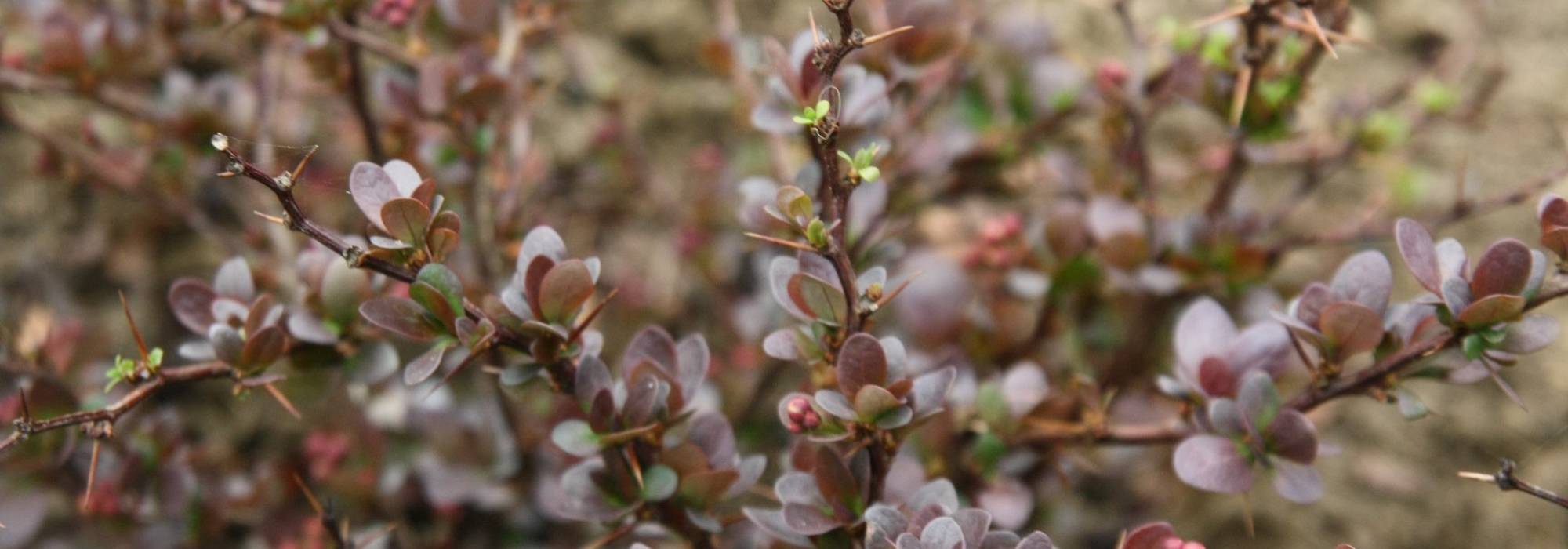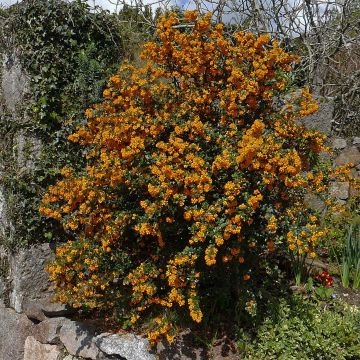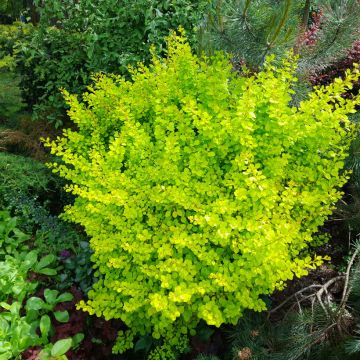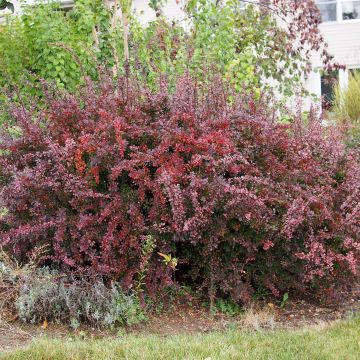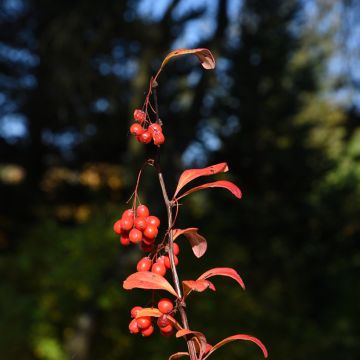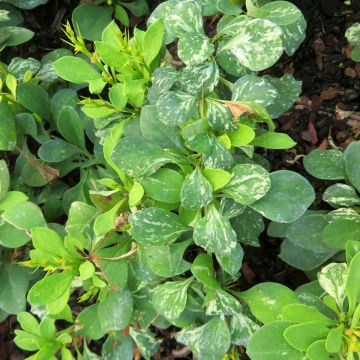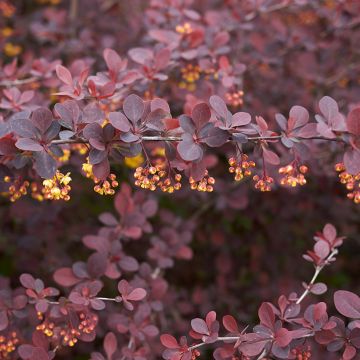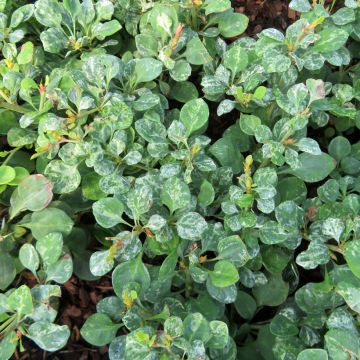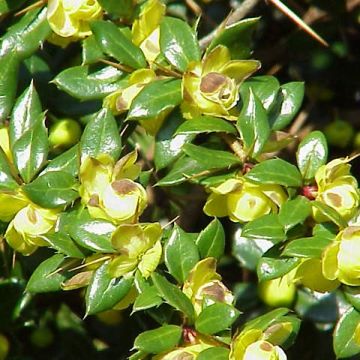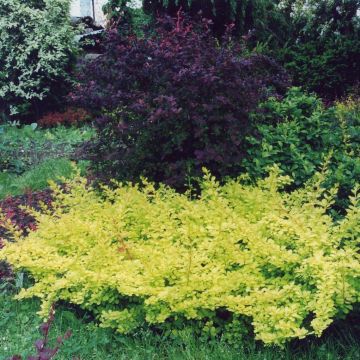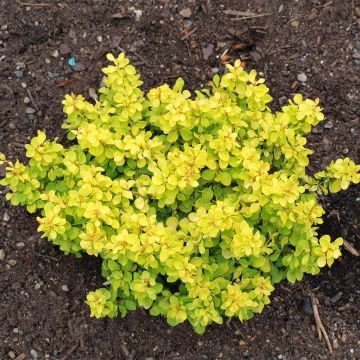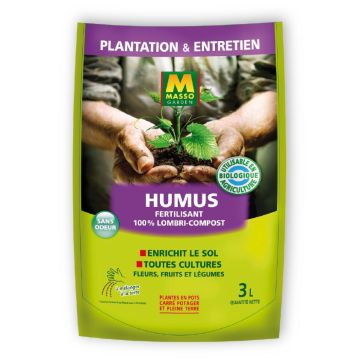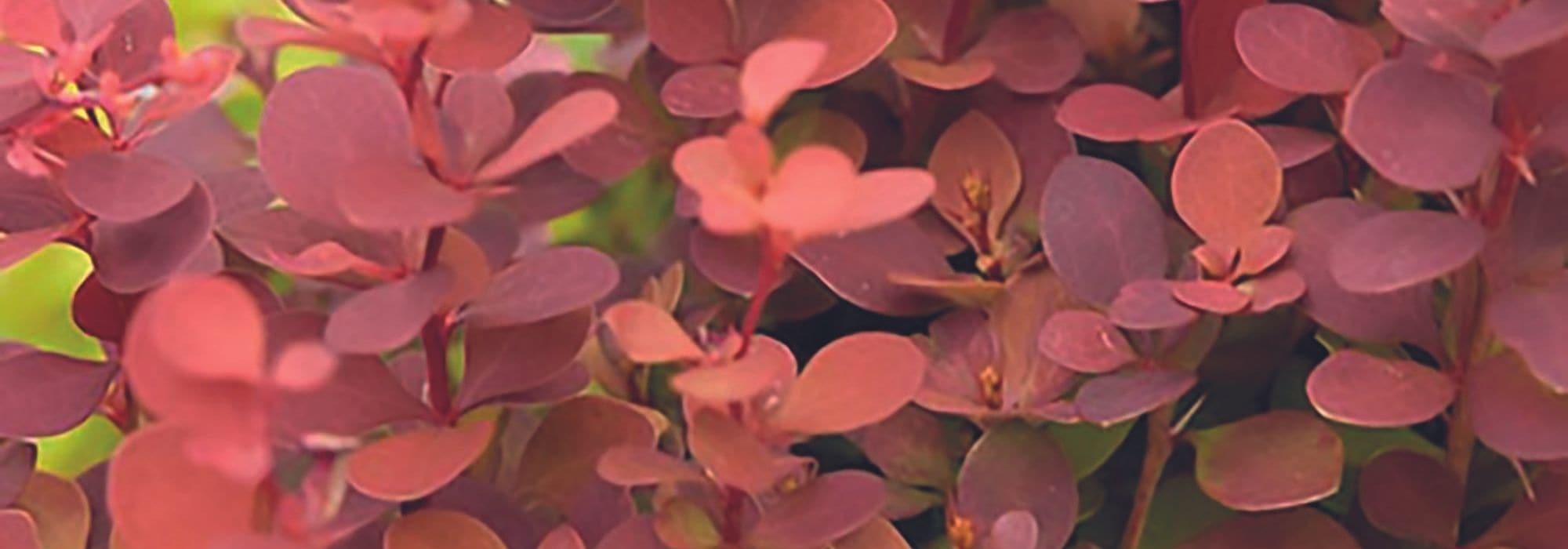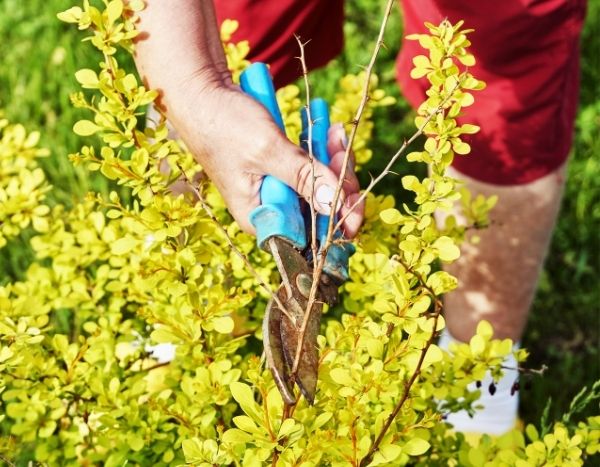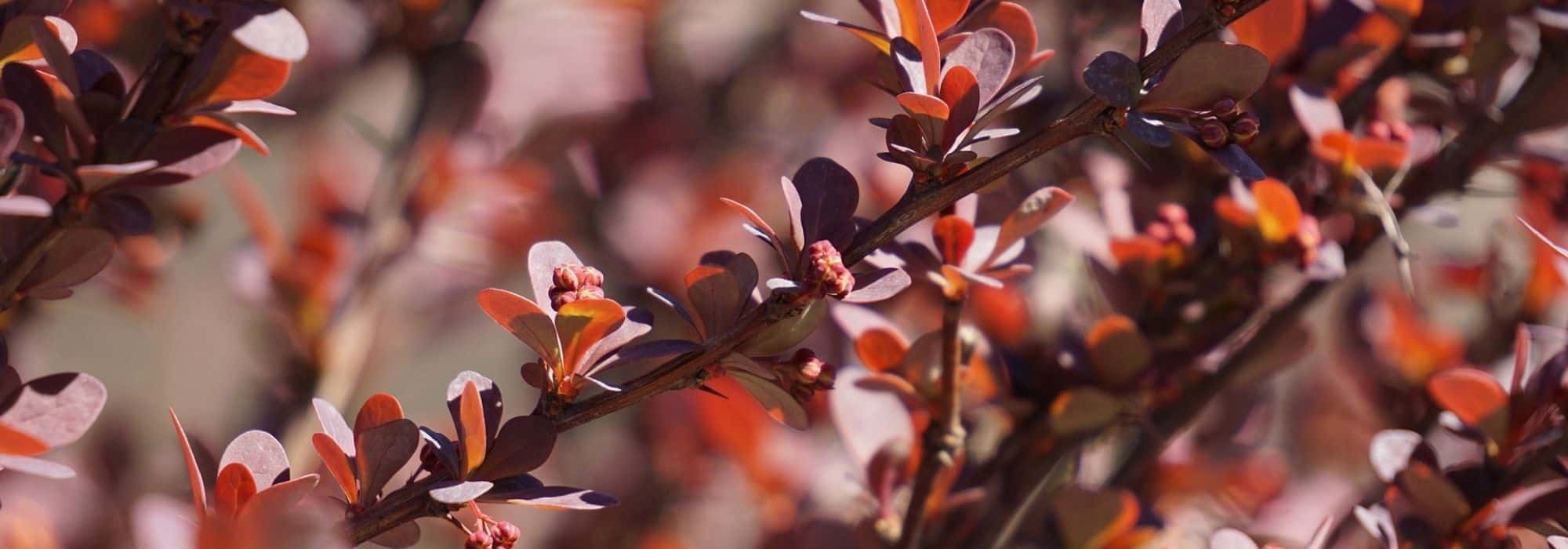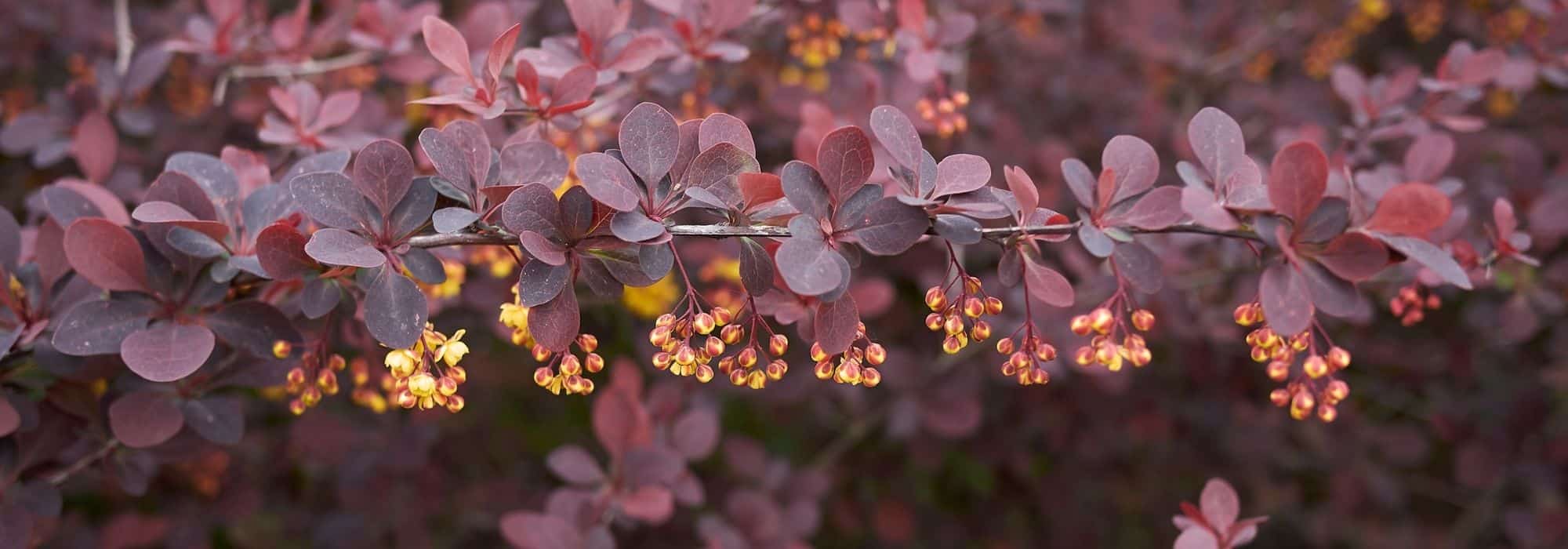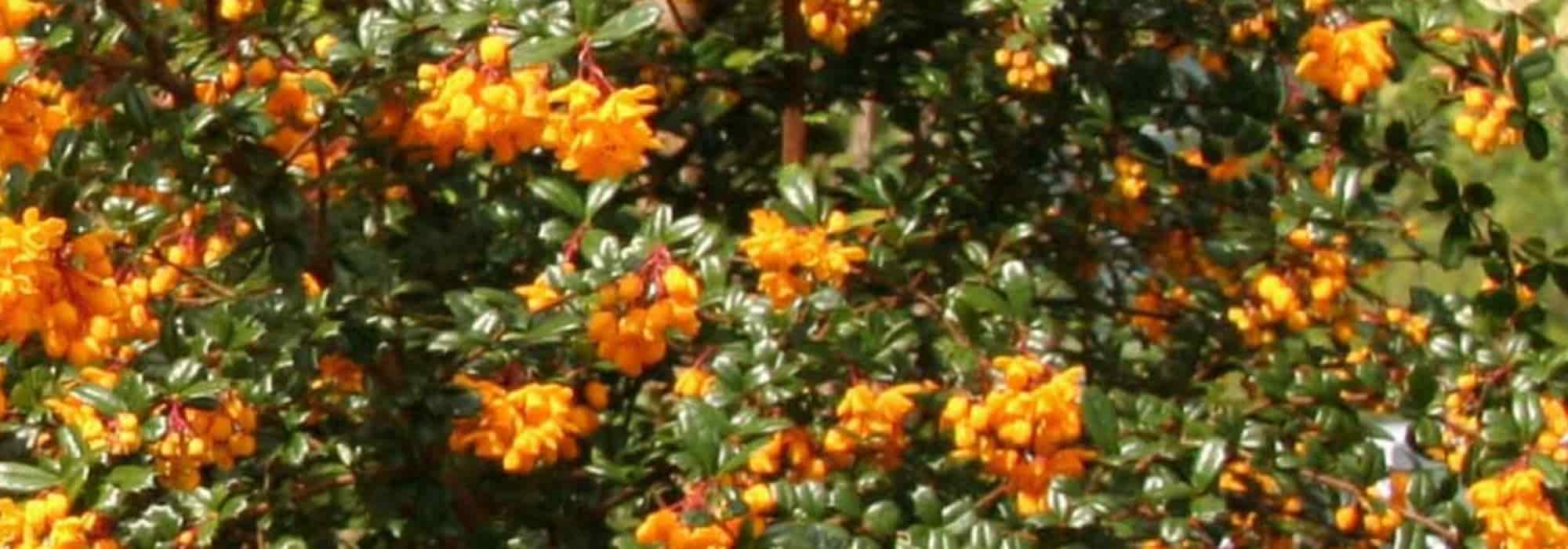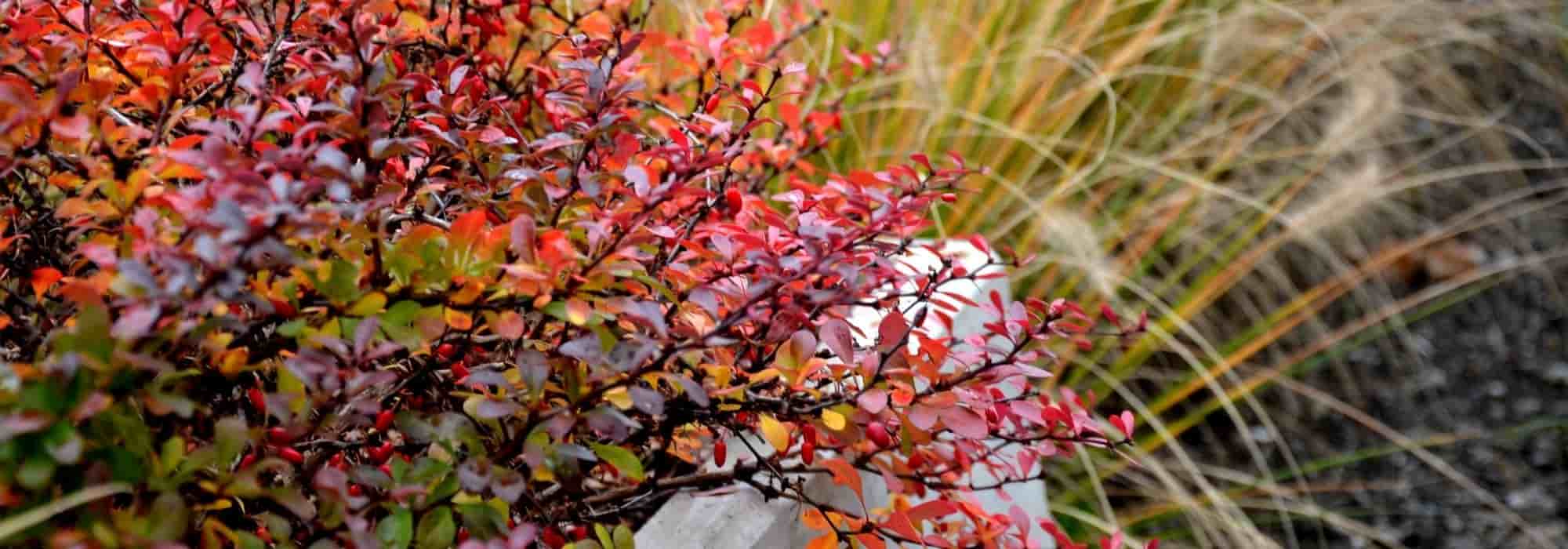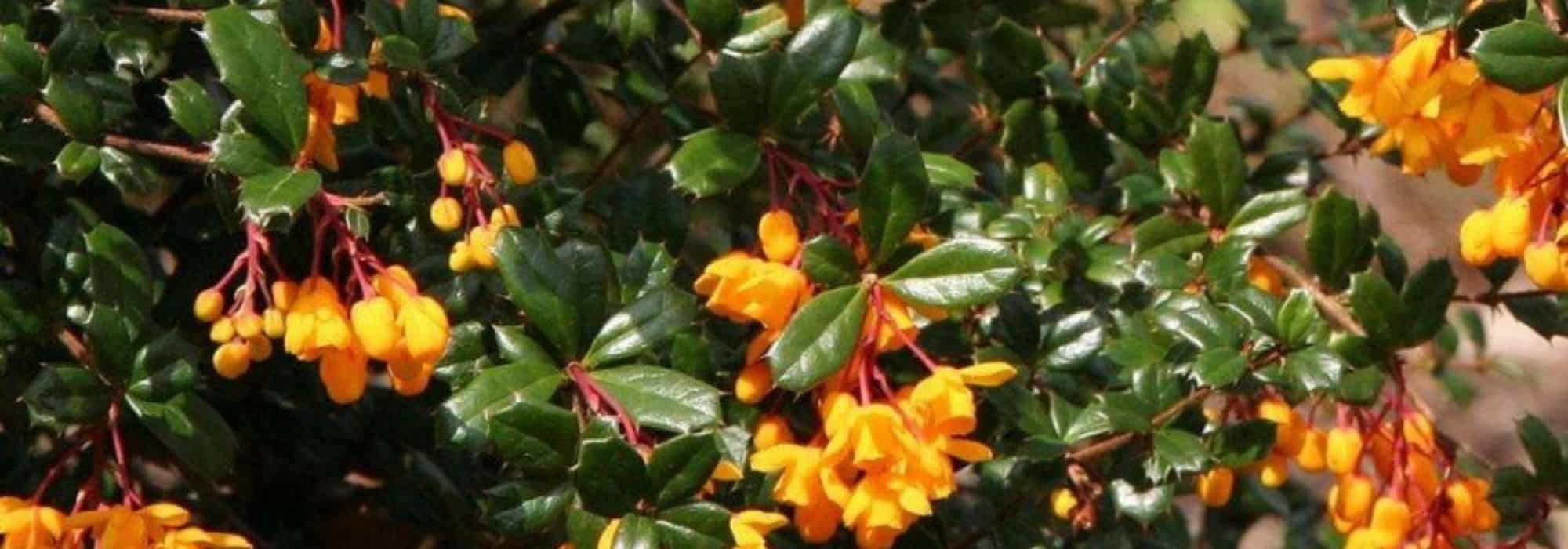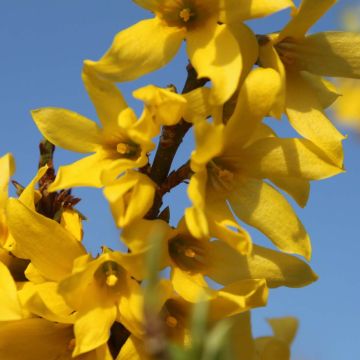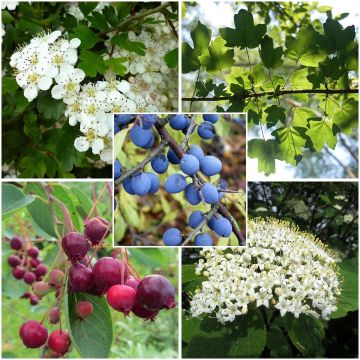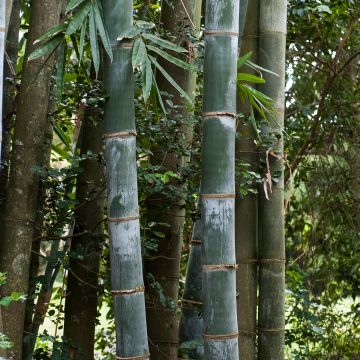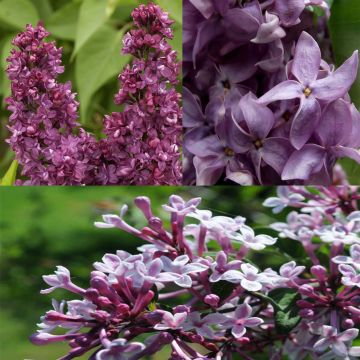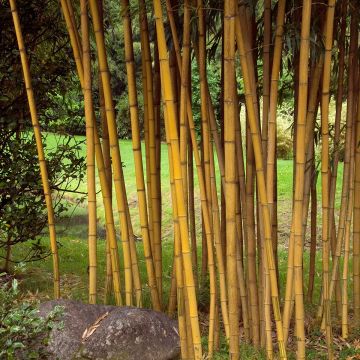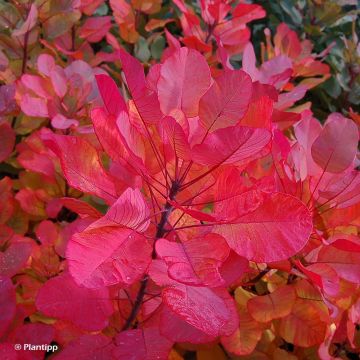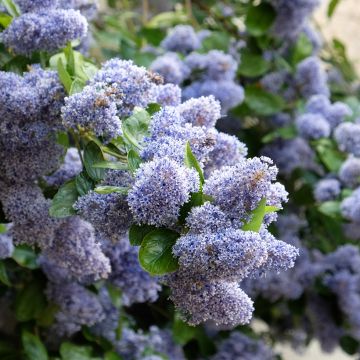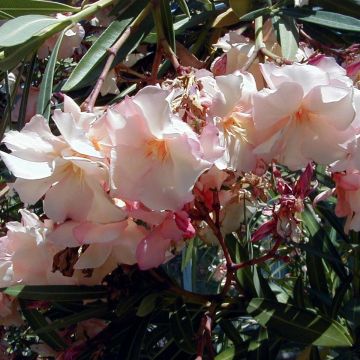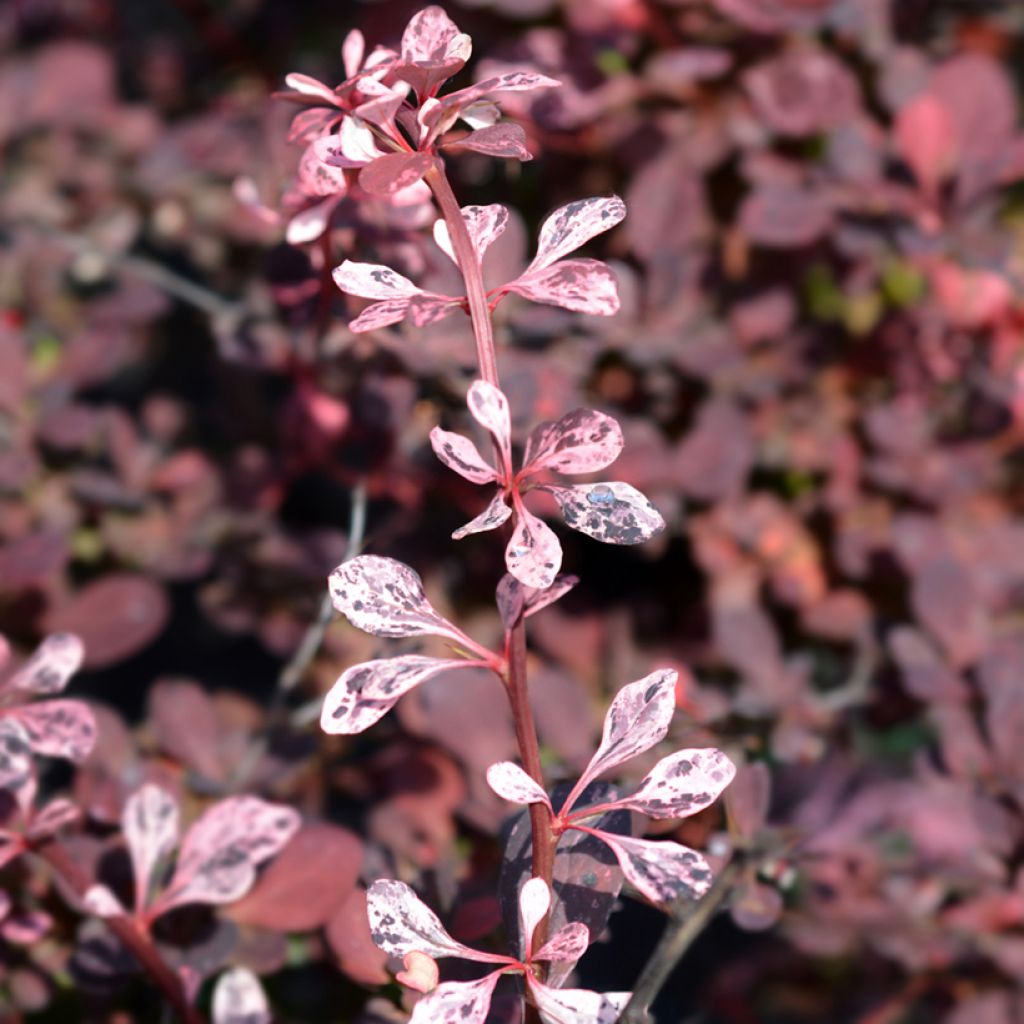

Berberis thunbergii Harlequin - Barberry
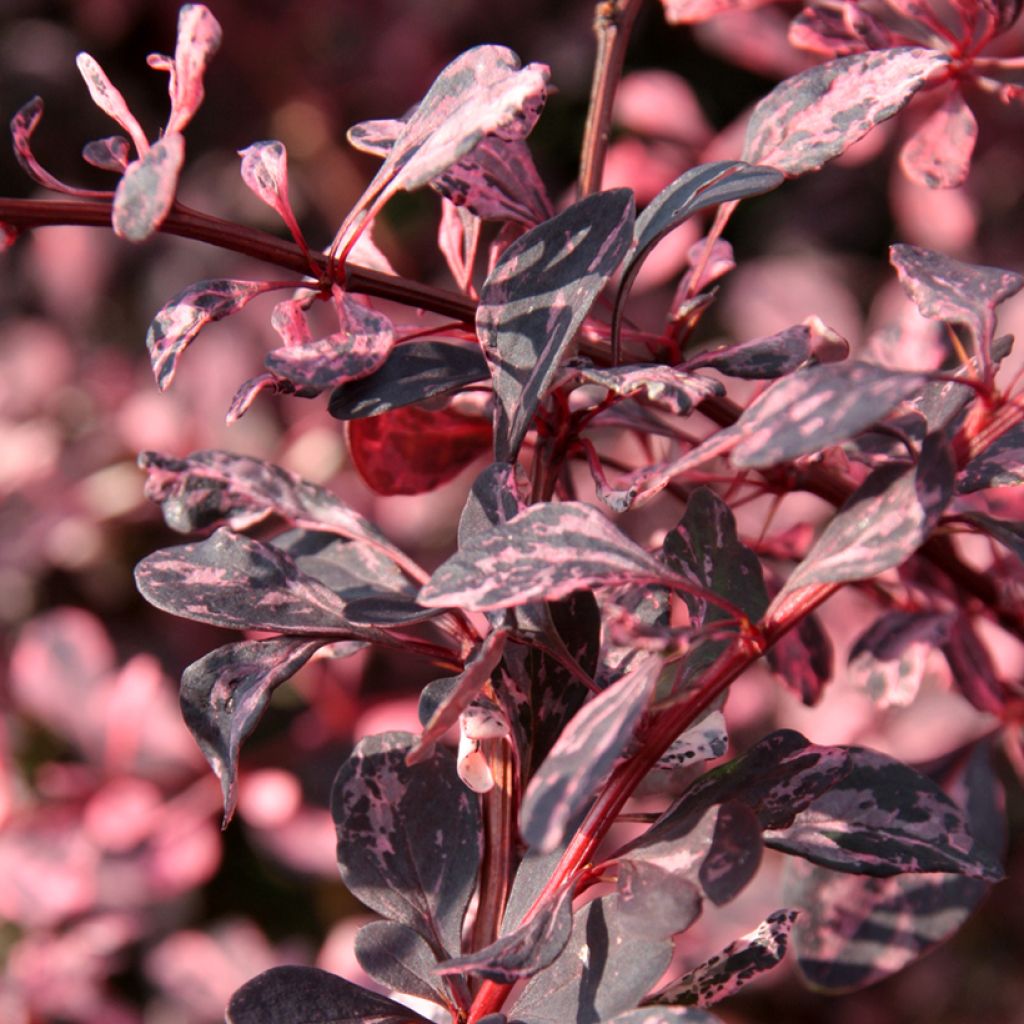

Berberis thunbergii Harlequin - Barberry
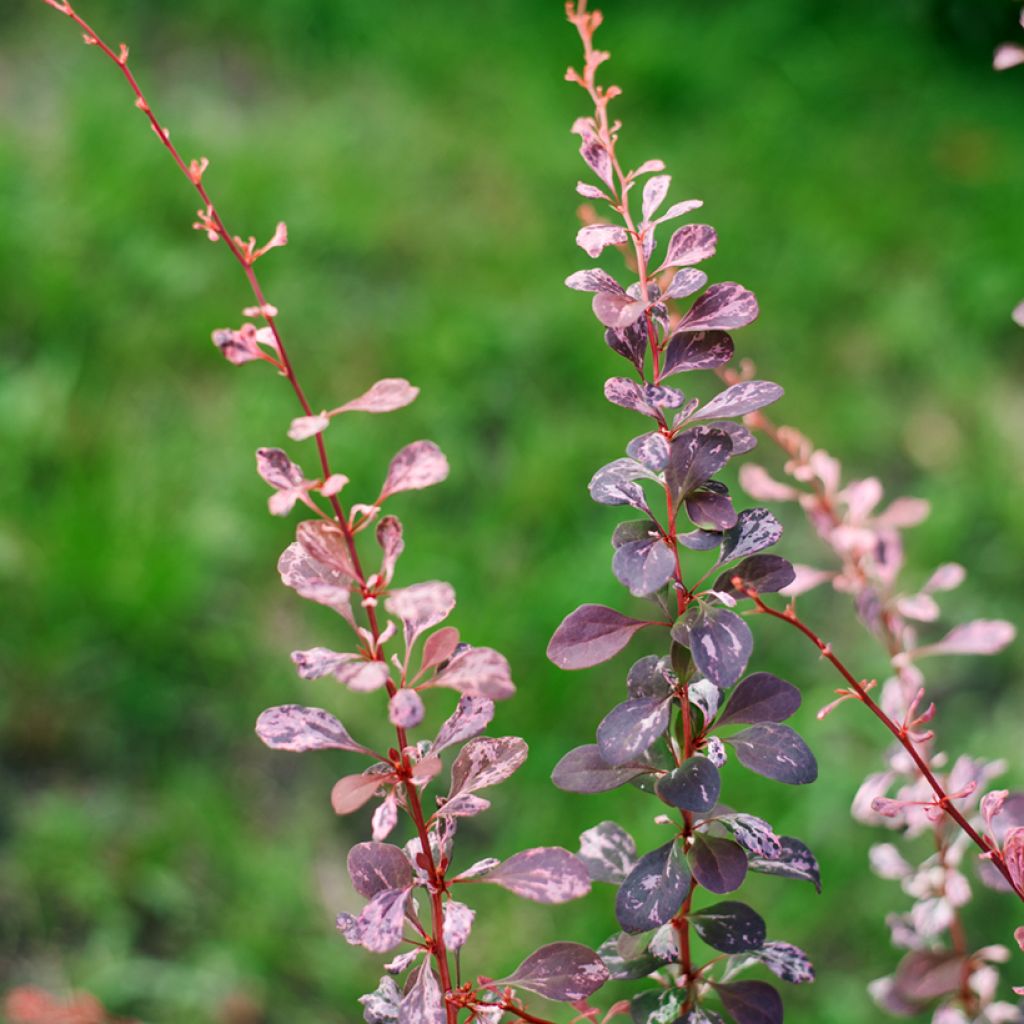

Berberis thunbergii Harlequin - Barberry
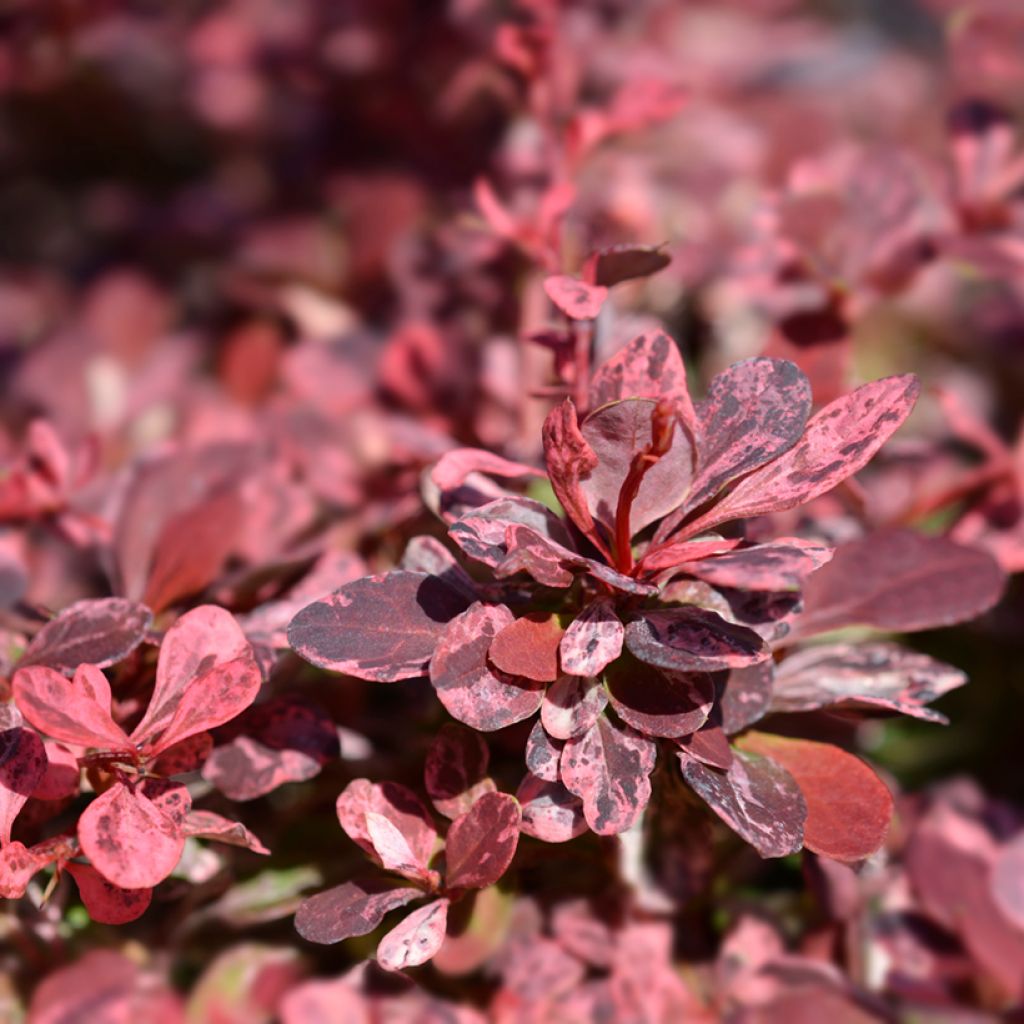

Berberis thunbergii Harlequin - Barberry
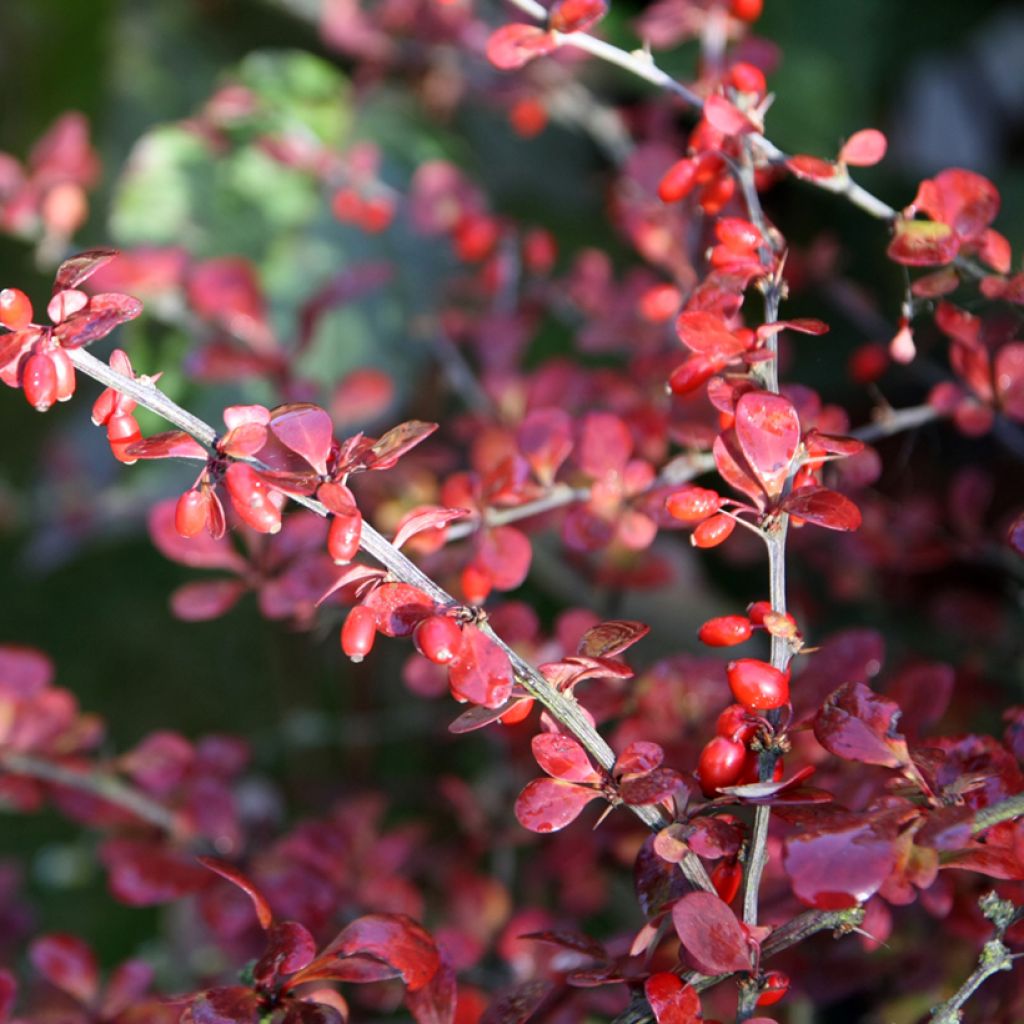

Berberis thunbergii Harlequin - Barberry
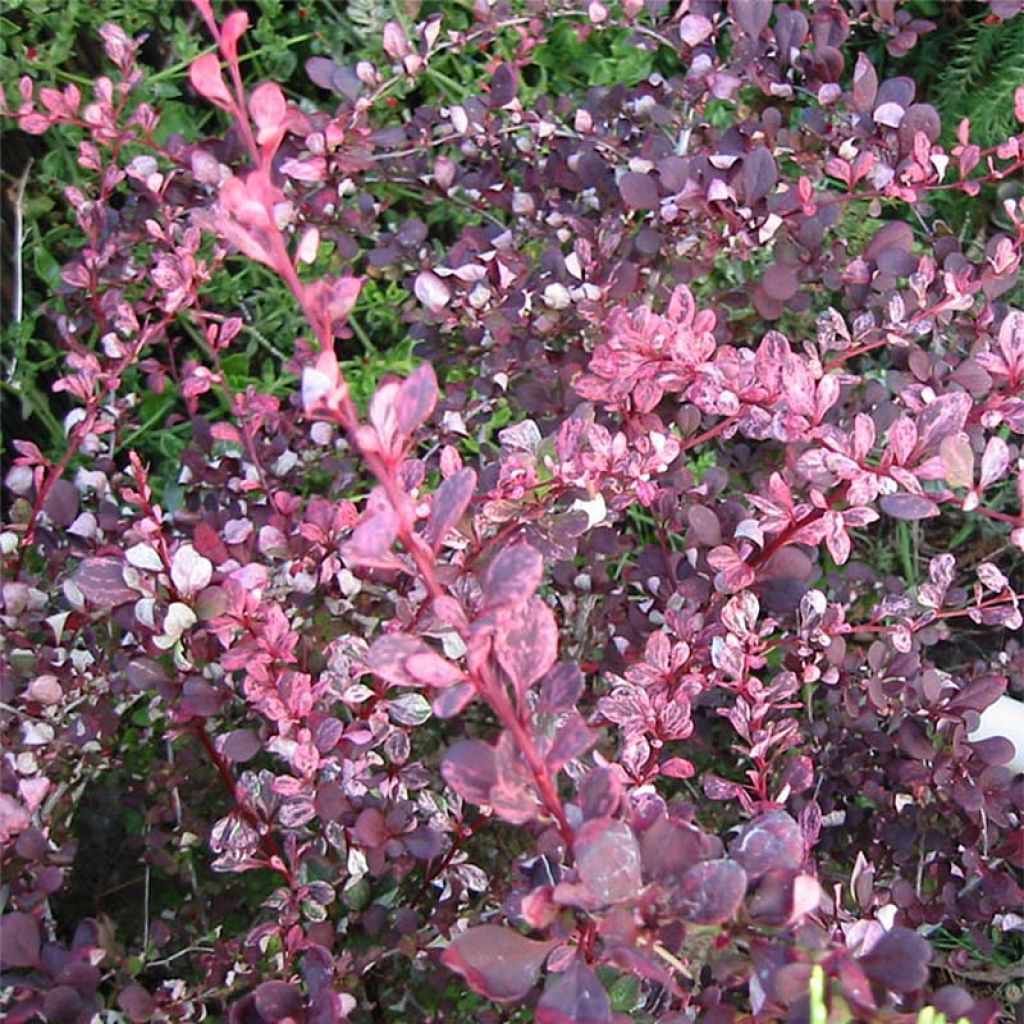

Berberis thunbergii Harlequin - Barberry
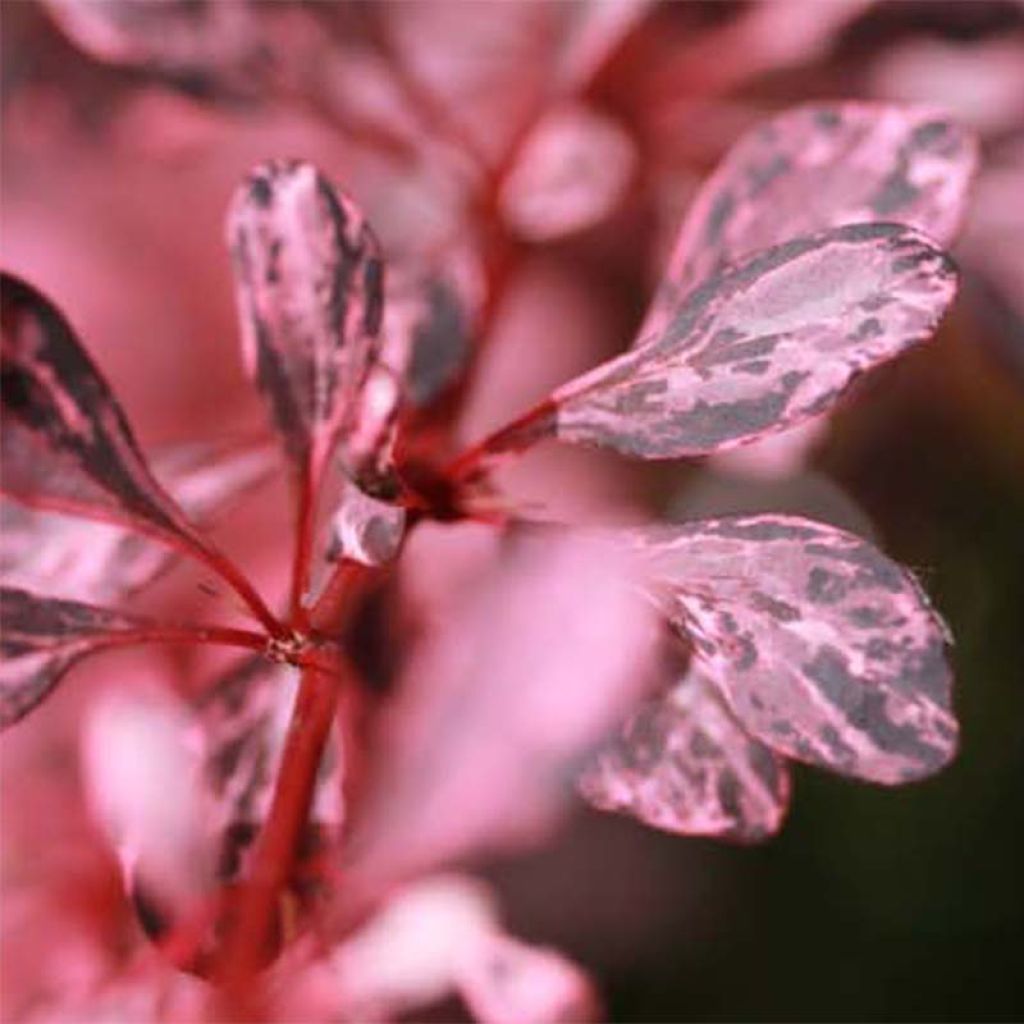

Berberis thunbergii Harlequin - Barberry
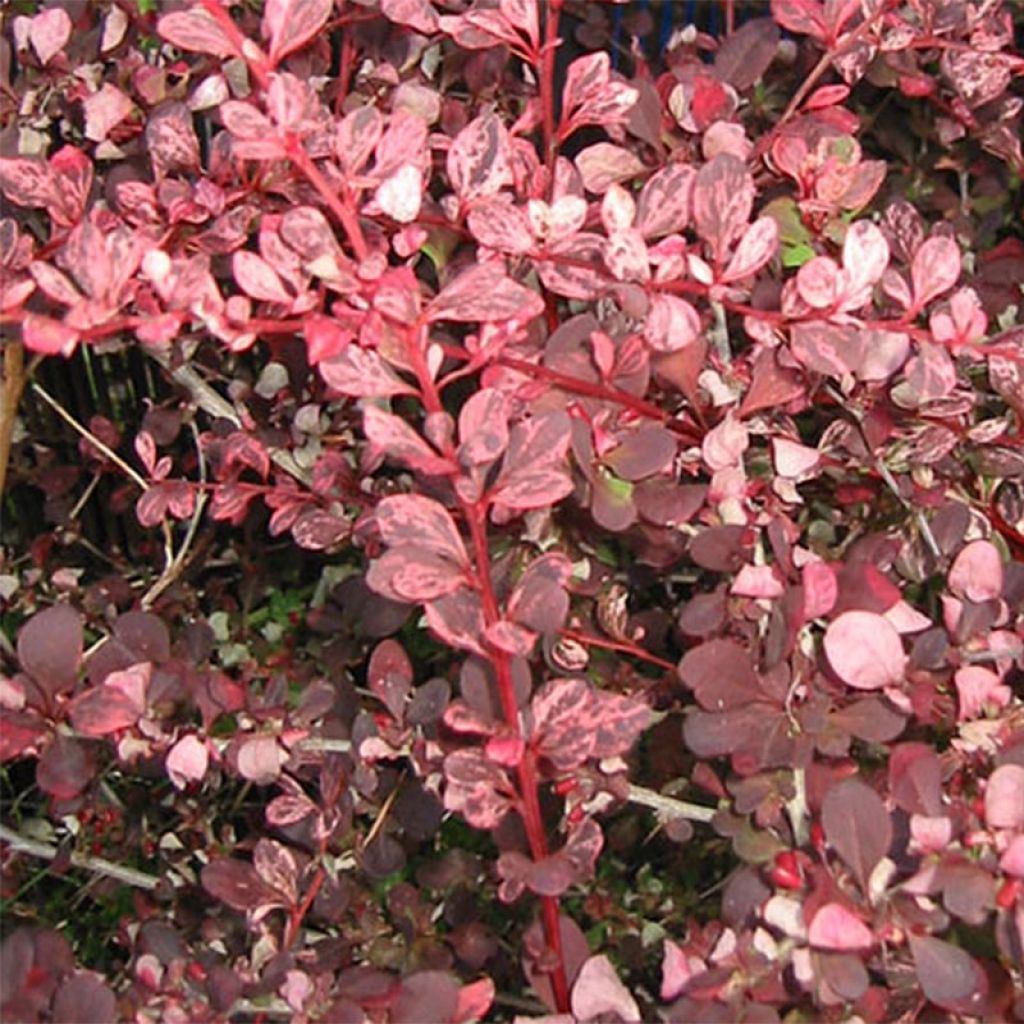

Berberis thunbergii Harlequin - Barberry
Berberis thunbergii Harlequin - Barberry
Berberis thunbergii Harlequin
Japanese Barberry
I had ordered this variety for the first time in 2018 and I confirm that it is AMAZING. It is uniformly burgundy in spring, then the foliage indeed turns a splendid intense fuchsia pink, afterwards, towards the beginning of summer or even the end of spring (I can't remember exactly, but it's around that time), but in any case, it's just like in the picture... and you end up with bushes.... fuchsia pink WOW (that's the overall impression) (!!!) until autumn, when the bush then adorns itself with golden yellow, orange, and pink.......... A true firework, and so striking that I recently bought a lot more for my new hedge, which I alternate with "Baggesen's Gold" honeysuckle and "Sparkler" firethorn (which also take on incredible pink shades, but in winter this time, due to the cold, since they are evergreen, just like the honeysuckle by the way), and various lush, original, and fast-growing fruit trees (Japanese goumi, cherry-plum, etc.).
Rebecca, 08/01/2022
Special offer!
Receive a €20 voucher for any order over €90 (excluding delivery costs, credit notes, and plastic-free options)!
1- Add your favorite plants to your cart.
2- Once you have reached €90, confirm your order (you can even choose the delivery date!).
3- As soon as your order is shipped, you will receive an email containing your voucher code, valid for 3 months (90 days).
Your voucher is unique and can only be used once, for any order with a minimum value of €20, excluding delivery costs.
Can be combined with other current offers, non-divisible and non-refundable.
Home or relay delivery (depending on size and destination)
Schedule delivery date,
and select date in basket
This plant carries a 24 months recovery warranty
More information
We guarantee the quality of our plants for a full growing cycle, and will replace at our expense any plant that fails to recover under normal climatic and planting conditions.
Does this plant fit my garden?
Set up your Plantfit profile →
Description
The Berberis thunbergii Harlequin is a beautifully coloured barberry variety, remarkable for its purple foliage splashed with pink and silver in late spring. Its small purple leaves change colour throughout the season, turning purple again in summer before changing to red-orange in autumn. This very rich and unusual foliage colour beautifully showcases its small orange flowers in spring, followed by bright red berries in late summer. Its modest growth and bushy habit make it particularly interesting when used in a small mixed hedge or in a large pot on the terrace.
The Berberis thunbergii, also known as Japanese barberry, is a bushy shrub from the berberidaceae family native to Japan. It is characterized by a compact and dense habit and deciduous or semi-evergreen foliage in mild climates.
The Dutch cultivar 'Harlequin', introduced in 1969, reaches a height and spread of 1.20m (3.94 ft) to 1.50m (4.92 ft). The branches of this variety are purplish, semi-arching and semi-erect, with non-aggressive thorns. The foliage is the main asset of this barberry. It consists of small leaves, measuring 1 to 2.5cm (0.4 - 1 in) long and obovate (ovate, with the upper part of the leaf wider than the lower part). At bud break, they show a pink-purple colour, then as they mature, they variegate with large pink and white-silver spots before turning purple again. In April-May, a few clusters of 1 to 6 small flowers bloom on 1-year-old stems. The bell-shaped flowers, 1cm (0.4 in) long, are golden orange streaked with red. They are very nectar-rich and are followed in September-October by small bright red spherical fruits, 6 to 8mm (0.2 - 0.3 in) long, which persist on the branches for part of the winter. The foliage takes on a beautiful reddish-orange colour before falling.
The Thunberg's barberry is a very adaptable shrub in terms of soil, tolerating pruning very well, but preferring sunny exposures. It is a pity to confine it to the role of an anonymous monochrome defensive hedge. Its beautiful foliage, remarkable in cultivars like 'Harlequin', deserves a prime location in front of larger shrubs with pink flowers (Kolkwitzia, Abelia, Abeliophyllum distichum Roseum), red flowers (Japanese quince, roses, Weigela) or even yellow to orange flowers (Kerria japonica, Genista Lena Orange, Honeysuckle Dropmore Scarlett). It can also be paired with the grey foliage of shrubby Artemisia, for example, or with variegated dogwoods. This shrub can also be planted in large rockeries to cover slopes or highlight the edge of a pathway. It also thrives when grown in a large container to adorn the terrace or balcony.
Berberis thunbergii Harlequin - Barberry in pictures
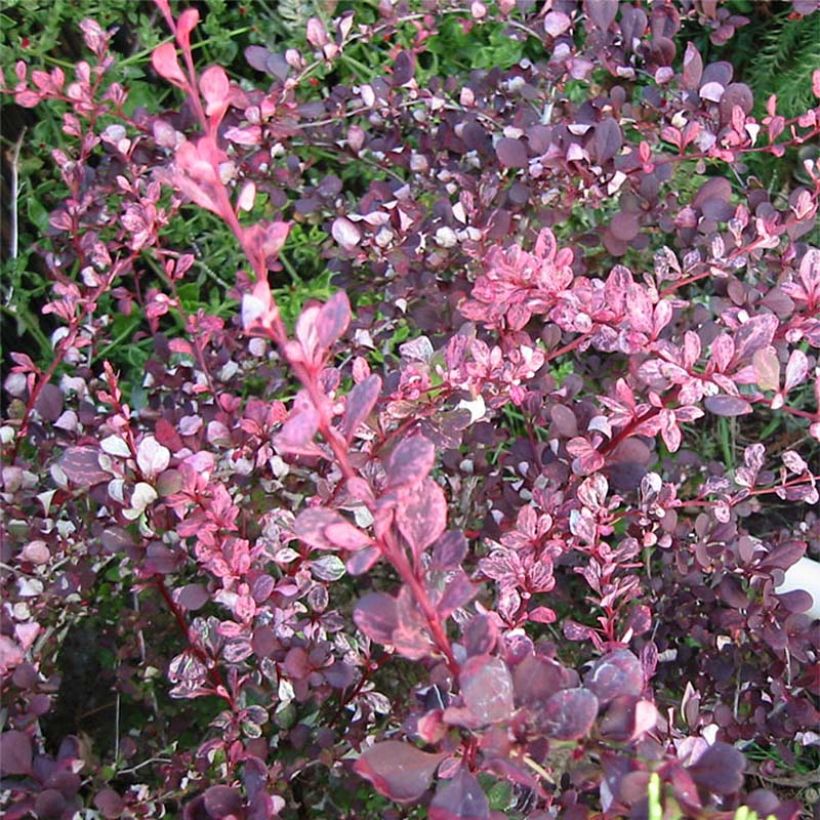

Plant habit
Flowering
Foliage
Botanical data
Berberis
thunbergii
Harlequin
Berberidaceae
Japanese Barberry
Cultivar or hybrid
Other Berberis - Barberries
View all →Planting and care
Berberis thunbergii Harlequin thrives in full sun or partial shade, with autumn colours being more intense in the sun. It is a plant that tolerates drought and harsh winters. Plant it in any type of soil as long as it is well drained. The planting hole should be twice the size of the root ball. Space the Berberis about 80cm (31.5 in) apart. Add compost and water well. It is a bush that tolerates pruning very well. From June to August, after flowering, cut back the faded branches to the level of the young lateral shoots to encourage the growth of new branches. Be careful not to touch the branches with bare hands as they have thorns that are difficult to remove once they penetrate the skin. The Berberis thunbergii can be susceptible to powdery mildew and black leaf spots. Aphids can also invade it.
Planting period
Intended location
Care
Planting & care advice
-
, onOrder confirmed
Reply from on Promesse de fleurs
Similar products
Haven't found what you were looking for?
Hardiness is the lowest winter temperature a plant can endure without suffering serious damage or even dying. However, hardiness is affected by location (a sheltered area, such as a patio), protection (winter cover) and soil type (hardiness is improved by well-drained soil).

Photo Sharing Terms & Conditions
In order to encourage gardeners to interact and share their experiences, Promesse de fleurs offers various media enabling content to be uploaded onto its Site - in particular via the ‘Photo sharing’ module.
The User agrees to refrain from:
- Posting any content that is illegal, prejudicial, insulting, racist, inciteful to hatred, revisionist, contrary to public decency, that infringes on privacy or on the privacy rights of third parties, in particular the publicity rights of persons and goods, intellectual property rights, or the right to privacy.
- Submitting content on behalf of a third party;
- Impersonate the identity of a third party and/or publish any personal information about a third party;
In general, the User undertakes to refrain from any unethical behaviour.
All Content (in particular text, comments, files, images, photos, videos, creative works, etc.), which may be subject to property or intellectual property rights, image or other private rights, shall remain the property of the User, subject to the limited rights granted by the terms of the licence granted by Promesse de fleurs as stated below. Users are at liberty to publish or not to publish such Content on the Site, notably via the ‘Photo Sharing’ facility, and accept that this Content shall be made public and freely accessible, notably on the Internet.
Users further acknowledge, undertake to have ,and guarantee that they hold all necessary rights and permissions to publish such material on the Site, in particular with regard to the legislation in force pertaining to any privacy, property, intellectual property, image, or contractual rights, or rights of any other nature. By publishing such Content on the Site, Users acknowledge accepting full liability as publishers of the Content within the meaning of the law, and grant Promesse de fleurs, free of charge, an inclusive, worldwide licence for the said Content for the entire duration of its publication, including all reproduction, representation, up/downloading, displaying, performing, transmission, and storage rights.
Users also grant permission for their name to be linked to the Content and accept that this link may not always be made available.
By engaging in posting material, Users consent to their Content becoming automatically accessible on the Internet, in particular on other sites and/or blogs and/or web pages of the Promesse de fleurs site, including in particular social pages and the Promesse de fleurs catalogue.
Users may secure the removal of entrusted content free of charge by issuing a simple request via our contact form.
The flowering period indicated on our website applies to countries and regions located in USDA zone 8 (France, the United Kingdom, Ireland, the Netherlands, etc.)
It will vary according to where you live:
- In zones 9 to 10 (Italy, Spain, Greece, etc.), flowering will occur about 2 to 4 weeks earlier.
- In zones 6 to 7 (Germany, Poland, Slovenia, and lower mountainous regions), flowering will be delayed by 2 to 3 weeks.
- In zone 5 (Central Europe, Scandinavia), blooming will be delayed by 3 to 5 weeks.
In temperate climates, pruning of spring-flowering shrubs (forsythia, spireas, etc.) should be done just after flowering.
Pruning of summer-flowering shrubs (Indian Lilac, Perovskia, etc.) can be done in winter or spring.
In cold regions as well as with frost-sensitive plants, avoid pruning too early when severe frosts may still occur.
The planting period indicated on our website applies to countries and regions located in USDA zone 8 (France, United Kingdom, Ireland, Netherlands).
It will vary according to where you live:
- In Mediterranean zones (Marseille, Madrid, Milan, etc.), autumn and winter are the best planting periods.
- In continental zones (Strasbourg, Munich, Vienna, etc.), delay planting by 2 to 3 weeks in spring and bring it forward by 2 to 4 weeks in autumn.
- In mountainous regions (the Alps, Pyrenees, Carpathians, etc.), it is best to plant in late spring (May-June) or late summer (August-September).
The harvesting period indicated on our website applies to countries and regions in USDA zone 8 (France, England, Ireland, the Netherlands).
In colder areas (Scandinavia, Poland, Austria...) fruit and vegetable harvests are likely to be delayed by 3-4 weeks.
In warmer areas (Italy, Spain, Greece, etc.), harvesting will probably take place earlier, depending on weather conditions.
The sowing periods indicated on our website apply to countries and regions within USDA Zone 8 (France, UK, Ireland, Netherlands).
In colder areas (Scandinavia, Poland, Austria...), delay any outdoor sowing by 3-4 weeks, or sow under glass.
In warmer climes (Italy, Spain, Greece, etc.), bring outdoor sowing forward by a few weeks.






























